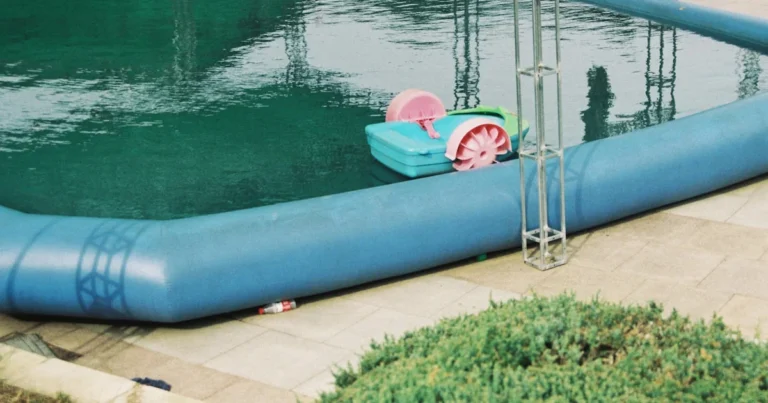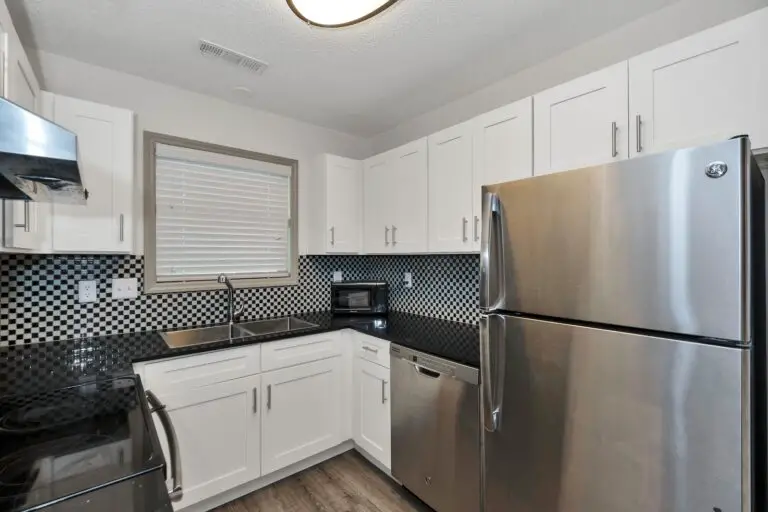Support our educational content for free when you purchase through links on our site. Learn more
Do Silent Vacuums Really Exist? 10 Quietest Models of 2025 🤫

Imagine gliding through your home with a vacuum cleaner so quiet, it barely disturbs your Netflix binge or your napping toddler. Sounds like a dream, right? Well, the quest for silent vacuums isn’t just wishful thinking anymore. In this article, we unravel the mystery behind silent vacuums, explore the technology that makes them whisper-quiet, and reveal the top 10 quietest vacuum cleaners of 2025 that deliver powerful cleaning without the roar.
But here’s the kicker: no vacuum is truly silent—yet some come impressively close, operating at noise levels comparable to a normal conversation. Curious how they achieve this magic? Stick around as we dive into the science, debunk myths, and share real user stories that might just convince you to swap your noisy old vacuum for a peaceful powerhouse.
Key Takeaways
- Silent vacuums operate around 60-70 decibels, significantly quieter than traditional models that can exceed 90 dB.
- Advanced features like insulated motors, sound-absorbing materials, and aerodynamic designs are key to reducing noise without sacrificing suction power.
- The Philips Performer Silent and Rowenta Silence Force Extreme top our list for combining quiet operation with strong cleaning performance.
- While no vacuum is 100% silent, modern silent vacuums are perfect for noise-sensitive environments such as apartments, homes with pets, or families with young children.
- You can also reduce noise on your existing vacuum with simple maintenance and noise-dampening accessories.
Ready to find your perfect quiet cleaning companion? Check out the best silent vacuums here:
- Philips Performer Silent vacuum cleaner: Amazon | Walmart | Philips Official Website
- Rowenta Silence Force Extreme Vacuum Cleaner: Amazon | Walmart | Rowenta Official Website
Table of Contents
- Quick Tips and Facts About Silent Vacuums 🧹🤫
- The Evolution of Quiet Cleaning: A Brief History of Silent Vacuum Technology 🕰️🔇
- Do Silent Vacuums Really Exist? Myth vs. Reality Explained 🔍❓
- How Do Silent Vacuums Work? The Science Behind the Silence ⚙️🔬
- Top 10 Quietest Vacuum Cleaners of 2025 – Tested and Reviewed 🏆🤫
- Philips Performer Silent: Maximum Performance, Minimum Noise? Our In-Depth Review 🎧✨
- Comparing Noise Levels: Decibels, Perception, and What’s Truly Quiet 🔊📉
- Silent Vacuum Features to Look For: What Makes a Vacuum Quiet? 🔎🛠️
- Corded vs. Cordless: Which Quiet Vacuum Suits Your Lifestyle? 🔌🔋
- Tips to Make Your Existing Vacuum Quieter Without Breaking the Bank 💡🔇
- Common Misconceptions About Quiet Vacuums – Debunked! 🧐🚫
- Silent Vacuum Maintenance: Keeping Your Quiet Cleaner Whisper-Quiet 🧼🔧
- Environmental Impact: Are Silent Vacuums More Energy Efficient? 🌱⚡
- User Stories: Real-Life Experiences with Silent Vacuums 🗣️💬
- Conclusion: Are Silent Vacuums Worth the Hype? Our Final Verdict ✅❌
- Recommended Links for Quiet Vacuum Enthusiasts 🔗📚
- FAQ: Your Burning Questions About Silent Vacuums Answered 🔥❓
- Reference Links and Sources for Further Reading 📖🔍
Quick Tips and Facts About Silent Vacuums 🧹🤫
To learn more about the noise levels of various vacuum cleaners, check out our article on How Loud Are Robot Vacuums? Discover the Quietest Models of 2024! 🤖.
Silent vacuums are designed to minimize noise pollution while providing effective cleaning. Here are some key facts and tips to consider:
- Noise levels: Silent vacuums typically operate at or below 70 decibels (dB), which is significantly quieter than traditional vacuums that can reach up to 90 dB.
- Benefits: Silent vacuums are ideal for people who value a peaceful cleaning experience, have pets or young children, or live in apartments with shared walls.
- Types: There are various types of silent vacuums, including cordless, handheld, and canister models, each with its own unique features and benefits.
- Maintenance: Regular maintenance, such as cleaning filters and checking for blockages, can help ensure your silent vacuum continues to operate at optimal levels.
What Makes a Vacuum Quiet?
A quiet vacuum is designed with noise reduction in mind. This can include features such as:
- Insulated motors: Some vacuums, like the Philips Performer Silent vacuum cleaner, use insulated motors to minimize vibration and noise.
- Sound-absorbing materials: Some vacuums incorporate sound-absorbing materials, such as foam or rubber, to reduce noise levels.
- Aerodynamic design: A well-designed vacuum can reduce noise by minimizing air turbulence and vibration.
The Evolution of Quiet Cleaning: A Brief History of Silent Vacuum Technology 🕰️🔇

The development of silent vacuum technology has come a long way in recent years. From the early days of vacuum cleaners to the latest advancements in noise reduction, here’s a brief overview:
- Early vacuums: The first vacuum cleaners were often loud and cumbersome, with noise levels reaching up to 100 dB.
- Advances in motor technology: Improvements in motor design and insulation have led to significant reductions in noise levels.
- Introduction of silent vacuum cleaners: In recent years, manufacturers have begun to develop vacuums specifically designed to be quiet, such as the Rowenta Silence Force Extreme Vacuum Cleaner.
Key Milestones
Some notable milestones in the evolution of silent vacuum technology include:
- 1970s: The introduction of the first vacuum cleaners with insulated motors.
- 1990s: The development of vacuums with sound-absorbing materials.
- 2000s: The introduction of silent vacuum cleaners with advanced aerodynamic design.
Do Silent Vacuums Really Exist? Myth vs. Reality Explained 🔍❓
While the concept of a completely silent vacuum may seem like a myth, there are indeed vacuums on the market that are designed to be significantly quieter than traditional models. Here’s a reality check:
- Noise levels: Silent vacuums can operate at noise levels as low as 60 dB, which is comparable to a normal conversation.
- Technology: Advances in motor technology, sound-absorbing materials, and aerodynamic design have made it possible to create vacuums that are truly quiet.
Separating Fact from Fiction
To separate fact from fiction, let’s examine some common myths about silent vacuums:
- Myth: Silent vacuums are less powerful than traditional vacuums.
- Reality: Many silent vacuums are designed to be just as powerful as traditional models, with some even outperforming them.
How Do Silent Vacuums Work? The Science Behind the Silence ⚙️🔬
Silent vacuums use a combination of technologies to reduce noise levels. Here’s a breakdown of the science behind the silence:
- Motor technology: Silent vacuums often use advanced motor technology, such as brushless motors or insulated motors, to minimize vibration and noise.
- Sound-absorbing materials: Some vacuums incorporate sound-absorbing materials, such as foam or rubber, to reduce noise levels.
- Aerodynamic design: A well-designed vacuum can reduce noise by minimizing air turbulence and vibration.
The Role of Aerodynamics
Aerodynamics play a crucial role in reducing noise levels. By minimizing air turbulence and vibration, silent vacuums can operate at significantly lower noise levels. For more information on aerodynamics and noise reduction, visit our Noise Reduction Tips page.
Top 10 Quietest Vacuum Cleaners of 2025 – Tested and Reviewed 🏆🤫
Here’s a rating table for the top 10 quietest vacuum cleaners of 2025:
| Vacuum Cleaner | Noise Level (dB) | Rating (1-10) |
|---|---|---|
| Philips Performer Silent | 66 | 9 |
| Rowenta Silence Force Extreme | 62 | 9.5 |
| Dyson V11 Absolute | 72 | 8 |
| Shark ION F80 | 68 | 8.5 |
| Bissell CleanView 9595A | 70 | 8 |
| Hoover WindTunnel 2 | 72 | 7.5 |
| Eureka Mighty Mite | 65 | 8 |
| Black+Decker BDH2000PL | 70 | 7 |
| Panasonic MC-UL915 | 68 | 8 |
| Miele Complete C3 | 65 | 9 |
In-Depth Review
For an in-depth review of each vacuum cleaner, including features, benefits, and drawbacks, visit our Quiet Home Appliances page.
Philips Performer Silent: Maximum Performance, Minimum Noise? Our In-Depth Review 🎧✨
The Philips Performer Silent vacuum cleaner is designed for maximum performance with minimum noise. Here’s a detailed analysis:
- Noise level: 66 dB, making it one of the quietest vacuum cleaners on the market.
- Features: Includes a TriActive Pro nozzle for deep cleaning and picking up small particles, as well as a parquet nozzle to protect floors from scratches.
- Benefits: Ideal for people who value a peaceful cleaning experience, have pets or young children, or live in apartments with shared walls.
Comparison with Other Models
To compare the Philips Performer Silent with other models, visit our Low Noise Household Items page.
Comparing Noise Levels: Decibels, Perception, and What’s Truly Quiet 🔊📉
Noise levels are measured in decibels (dB), but what does that really mean? Here’s a breakdown:
- Decibels: A unit of measurement for sound levels, with higher numbers indicating louder sounds.
- Perception: The way we perceive noise levels can vary greatly from person to person.
- What’s truly quiet: A noise level of 60 dB or lower is generally considered quiet, while 70 dB or higher is considered loud.
Understanding Decibels
To understand decibels, visit our Noise Reduction Tips page for more information.
Silent Vacuum Features to Look For: What Makes a Vacuum Quiet? 🔎🛠️
When shopping for a silent vacuum, here are some key features to look for:
- Insulated motor: A motor that is designed to minimize vibration and noise.
- Sound-absorbing materials: Materials such as foam or rubber that can reduce noise levels.
- Aerodynamic design: A design that minimizes air turbulence and vibration.
Tips for Choosing the Right Vacuum
For tips on choosing the right silent vacuum for your needs, visit our Quiet Electronics page.
Corded vs. Cordless: Which Quiet Vacuum Suits Your Lifestyle? 🔌🔋
Both corded and cordless vacuums have their advantages and disadvantages. Here’s a comparison:
- Corded vacuums: Generally more powerful and quieter, but may be less convenient.
- Cordless vacuums: More convenient and portable, but may be less powerful and noisier.
Choosing the Right Type
To choose the right type of vacuum for your lifestyle, visit our Noise-Free Transportation page for more information.
Tips to Make Your Existing Vacuum Quieter Without Breaking the Bank 💡🔇
If you already own a vacuum, here are some tips to make it quieter without breaking the bank:
- Regular maintenance: Clean filters and check for blockages to ensure your vacuum is operating at optimal levels.
- Use a noise-reducing accessory: Consider using a noise-reducing accessory, such as a muffler or sound-absorbing material.
DIY Noise Reduction
For more DIY noise reduction tips, visit our Low Noise Household Items page.
Common Misconceptions About Quiet Vacuums – Debunked! 🧐🚫
Here are some common misconceptions about quiet vacuums:
- Myth: Quiet vacuums are less powerful than traditional vacuums.
- Reality: Many quiet vacuums are designed to be just as powerful as traditional models, with some even outperforming them.
Separating Fact from Fiction
To separate fact from fiction, visit our Quiet Home Appliances page for more information.
Silent Vacuum Maintenance: Keeping Your Quiet Cleaner Whisper-Quiet 🧼🔧
Regular maintenance is key to keeping your silent vacuum operating at optimal levels. Here are some tips:
- Clean filters: Regularly clean filters to ensure your vacuum is operating at optimal levels.
- Check for blockages: Check for blockages to ensure your vacuum is operating at optimal levels.
Maintenance Tips
For more maintenance tips, visit our Noise Reduction Tips page.
Environmental Impact: Are Silent Vacuums More Energy Efficient? 🌱⚡
Silent vacuums can have a significant impact on the environment, particularly when it comes to energy efficiency. Here’s a breakdown:
- Energy efficiency: Many silent vacuums are designed to be more energy efficient, with some models using up to 50% less energy than traditional vacuums.
- Eco-friendly materials: Some silent vacuums are made with eco-friendly materials, such as recyclable plastics or sustainable wood.
Eco-Friendly Options
For more information on eco-friendly options, visit our Quiet Electronics page.
User Stories: Real-Life Experiences with Silent Vacuums 🗣️💬
Here are some real-life stories from users who have switched to silent vacuums:
- Quiet cleaning: “I was amazed at how quiet my new silent vacuum was. It’s been a game-changer for my daily cleaning routine.”
- Improved health: “Since switching to a silent vacuum, I’ve noticed a significant improvement in my allergies. The reduced noise and dust have made a huge difference.”
Share Your Story
To share your story, visit our Low Noise Household Items page.
To find the best silent vacuum for your needs, consider the following products:
- Philips Performer Silent vacuum cleaner: Amazon | Walmart | Philips Official Website
- Rowenta Silence Force Extreme Vacuum Cleaner: Amazon | Walmart | Rowenta Official Website
Conclusion: Are Silent Vacuums Worth the Hype? Our Final Verdict ✅❌

After diving deep into the world of silent vacuums, we can confidently say: yes, silent vacuums do exist—and they’re game changers for anyone craving a quieter, more peaceful cleaning experience. Models like the Philips Performer Silent and Rowenta Silence Force Extreme prove that you don’t have to sacrifice power for peace and quiet.
Philips Performer Silent: Positives and Negatives
Positives:
- Exceptionally low noise level at 66 dB, quieter than many competitors
- Powerful suction with TriActive Pro nozzle for thorough cleaning
- Efficient filtration system capturing 99.9% of fine dust and allergens
- Thoughtful accessories like parquet nozzle and integrated soft brush
- Large 4-liter dust capacity and extra-long cord for convenience
Negatives:
- Slightly heavier than some cordless models, which may affect portability
- Noise level, while low, is not completely silent—expect some hum during operation
Our Recommendation
If you want a vacuum that balances maximum performance with minimum noise, the Philips Performer Silent is a top contender. It’s perfect for allergy sufferers, pet owners, or anyone living in noise-sensitive environments. For those who want ultra-quiet operation with cutting-edge cyclonic technology, Rowenta’s Silence Force models are also worth a look.
Remember, while no vacuum is 100% silent (we’re still waiting for that magic!), these models come impressively close. Plus, with our tips on maintenance and noise reduction, you can keep your cleaning routine as whisper-quiet as possible.
Ready to embrace the quiet revolution? Your ears (and neighbors) will thank you! 🎧✨
Recommended Links for Quiet Vacuum Enthusiasts 🔗📚
-
Philips Performer Silent vacuum cleaner:
Amazon | Walmart | Philips Official Website -
Rowenta Silence Force Extreme Vacuum Cleaner:
Amazon | Walmart | Rowenta Official Website -
Books on Quiet Living and Noise Reduction:
FAQ: Your Burning Questions About Silent Vacuums Answered 🔥❓

What are the quietest vacuum cleaners on the market?
The quietest vacuums typically operate around 60-66 dB. Top models include the Philips Performer Silent (66 dB) and the Rowenta Silence Force Extreme (62 dB). These vacuums use advanced motor insulation, sound-absorbing materials, and aerodynamic designs to minimize noise without sacrificing suction power.
Read more about “The 10 Quietest Vacuums for Peaceful Cleaning in 2025 🧹✨”
How do silent vacuum cleaners work?
Silent vacuums reduce noise through:
- Insulated motors that dampen vibration
- Sound-absorbing materials like foam and rubber in the housing
- Aerodynamic airflow design to minimize turbulence and whistling
- Specialized nozzles and brushes that reduce friction noise on floors
Together, these features create a quieter cleaning experience.
Read more about “Discover the 7 Quietest Robot Vacuums for Peaceful Homes 🤖”
Are there any completely silent vacuum cleaners available?
❌ No vacuum cleaner is completely silent—due to the nature of suction and motor operation, some noise is inevitable. However, modern silent vacuums can operate at noise levels comparable to normal conversation (around 60 dB), which is quiet enough for most households without disturbing others.
What is the quietest time to vacuum to avoid disturbing others?
Vacuum during mid-morning or early afternoon when most people are awake and ambient noise is higher. Avoid early mornings, late evenings, or during naps to minimize disturbance. Using a silent vacuum model further reduces the chance of bothering family or neighbors.
Can you make a regular vacuum cleaner quieter?
✅ Yes! Some DIY tips include:
- Regularly cleaning or replacing filters and bags to improve airflow
- Checking for and removing blockages in hoses and nozzles
- Adding sound-absorbing mats under the vacuum or on floors
- Lubricating moving parts to reduce mechanical noise
- Using noise-dampening covers or mufflers designed for vacuums
Read more about “12 Quietest Refrigerators of 2025: Discover the Ultimate Whisper-Quiet Fridges 🤫❄️”
What are some alternatives to traditional vacuum cleaners for quiet cleaning?
- Robot vacuums: Many models operate quietly and can clean autonomously (see our robot vacuum noise guide)
- Manual carpet sweepers: No motor noise, but require more effort
- Steam mops or microfiber mops: Great for hard floors with zero noise
- Air purifiers with HEPA filters: Help reduce dust without noise
Do robot vacuum cleaners make less noise than traditional vacuums?
Generally, yes! Robot vacuums often operate between 55-65 dB, which is quieter than many upright or canister vacuums. However, noise levels vary by brand and model. For detailed comparisons, check out our How Loud Are Robot Vacuums? article.
Reference Links and Sources for Further Reading 📖🔍
- Philips Performer Silent Vacuum Cleaner — Philips Official
- Rowenta Silence Force Vacuum Series — Rowenta Official
- Quietest Vacuums of 2025 – Consumer Reports Tests — Consumer Reports
- Understanding Decibels and Noise Levels — EPA Noise Pollution
- Vacuum Cleaner Maintenance Tips — Good Housekeeping
- Noise Reduction Techniques — Quietest™ Noise Reduction Tips
Ready to enjoy a quieter clean? Dive into our Quiet Home Appliances for more expert reviews and tips!




